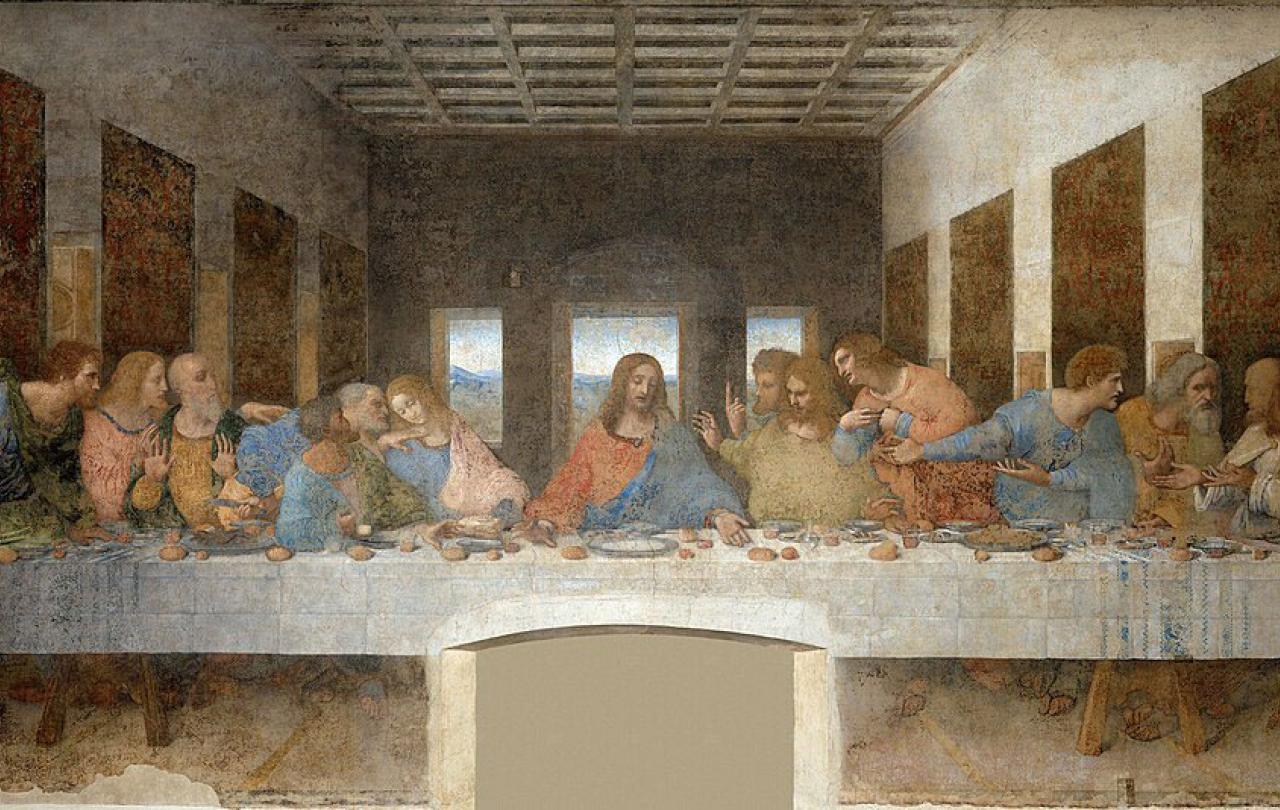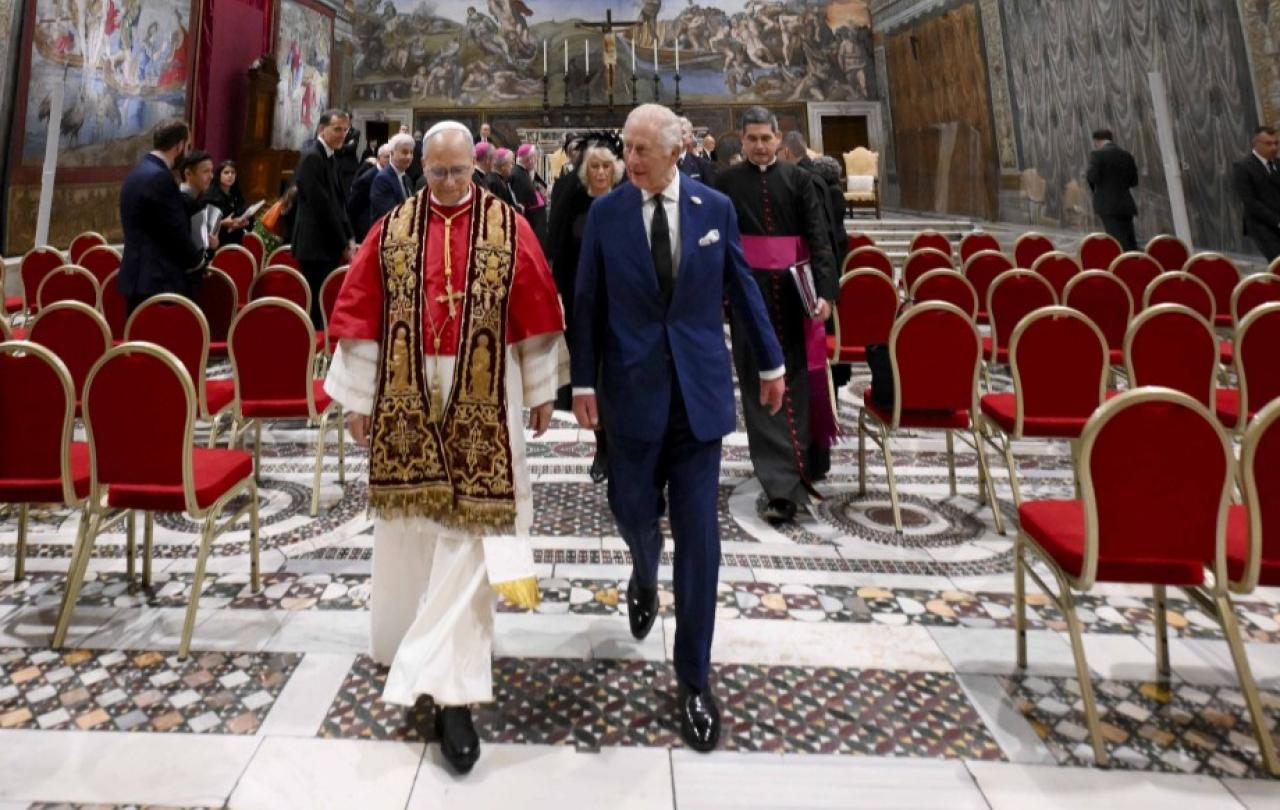Last week, King Charles met the Pope.
There was a part of me that wondered what Martin Luther, Thomas Cranmer, and even the young Ian Paisley would have of made it. Not much I imagine. The days of sharp theological barbs thrown between Protestants and Catholics over the mass, purgatory, the place of Mary, praying to the saints and so on are largely over. I imagine they had a cup of tea, admired Michaelangelo’s painting in the Sistine chapel and had a chat, but the main thing they did was to pray together - the first time a British monarch had met to pray with a Pope since the Reformation.
So this was quite a big deal. Prayer carries much more significance than tea. But why did it matter so much?
To make sense of it, you have to remember the history.
In the aftermath of the English church’s break from Rome under Henry VIII, later consolidated under Elizabeth I, one of the most influential books that emerged from the English Reformation was Foxe’s Book of Martyrs, originally published in 1563. Alongside the ubiquitous King James Bibles, copies were to be found in English homes up and down the country for centuries afterwards. The book was a grisly catalogue of Christian persecution down the ages, and a thinly veiled side-swipe at the author’s main target - the Roman Catholic church, or “popery, which brought innovations into the church and overspread the Christian world with darkness and superstition.” Back then, that was how most British people saw the papacy.
In 1605, a plot led by a group of English Roman Catholics to kill King James I of England (and VI of Scotland) and to blow up the Houses of Parliament was rumbled – the infamous Gunpowder Plot. For centuries afterwards on the anniversary of the conspiracy (until Health & Safety and modern squeamishness toned it down) the English lit bonfires, launched fireworks, and burnt effigies of the Catholic plotter Guy Fawkes to celebrate the deliverance of the nation from papal tyranny. At the time - and partly as a result of that event - Catholics were feared in England much as militant Islam is today in parts of the west – as a shadowy force infiltrating the nation from other European countries (mainly France and Ireland in this case), intent on changing the religion of the country, and imposing arbitrary and tyrannical rule on the population of Britain.
Later in the same century, the looming prospect of a Catholic monarch put Britain into a spin. Charles II had been restored to the throne in 1660 after his father’s execution during the Civil Wars. Charles’ own Protestant credentials were always shaky – a fear that was confirmed by his deathbed conversion to Catholicism in 1685, but at least during his lifetime he remained a Protestant Anglican. The real problem was the heir – Charles’ younger brother James, the rakish Duke of York who was most definitely a Catholic. The same fears of papal tyranny and arbitrary rule, taking away the precious freedoms of the British people were the talk of the coffee houses and broadsheets of the 1670s and 80s.
All the more remarkable then, that relationships between Anglicans and Roman Catholics have develop to such an extent that Anglicans (alongside other churches) were guests of honour at the late pope’s funeral and the inaugural mass of the new pope - and a King prays with a Pope.
So why have things changed so much?
Part of the answer is that times have changed. Europe is less obviously Christian than it was back then. The Christian churches have realised they don’t have the luxury of fighting over such matters. With Christian theology becoming less of a ‘public truth’ that held nations together (much as notions of freedom and democracy do for us today) arguments over it became less fraught and charged.
Another reason is the lengthy conversations that have taken place between churches in the ecumenical movement throughout the last century that have carefully been able to unpick the disagreements, clarifying what was and wasn’t at stake in the fights between Lutherans, Catholics, Anglicans, Orthodox and others. These conversations haven’t solved all the issues. Different Christian denominations still disagree on a lot, especially today on issues like human sexuality and the like, but over time, they have at least brought clarity and a certain harmony to some of the historic disagreements. Anglicans still convert to Catholicism, and Catholics become Anglicans (or Orthodox or Pentecostals). The King and the Archbishop of York could not take Holy Communion with the Pope, but they could pray. I know from personal experience the depths of friendship that come when you recognise a brother or a sister in a Christian that you disagree with but in whom you can still recognise an essential commonality.
Another key part of the answer is that the Roman Catholic church has changed. Last year for example, the Vatican department that oversees relationships with other churches issued a study document called ‘The Bishop of Rome’. It was part of an ongoing conversation between the Roman Catholic Church and other world churches on the role of the Pope in the modern world. It talked about the Papacy as having a ‘primacy of service’, its authority linked not to the triumphant but the suffering Christ, of how the Pope offered a kind of ‘personal’ kind of leadership, Orthodox churches a ‘collegial’ form (led by groups of bishops) and the Protestant churches a form that stressed the importance of the whole community.
In other words, here was the Vatican asking other churches how the Papacy can be a help and support to Christians around the world. Back in the nineteenth century, in the first Vatican Council of 1869, the language was very different. The papacy was there by ‘divine right’, essential for the church, implying that other churches really ought to come back into the fold of the Church of Rome. The Roman Catholic church now seems to take a humbler, more generous stance which makes it possible for a King to pray with a Pope again.
It's a heartwarming story. We constantly lament today the polarised, fragmented and angry nature of our politics and our cultural debate. The ecumenical movement of the Christian churches over the last hundred years may not be the sexiest development in recent cultural history. It involved long and painstaking conversations, the building of friendships and relationships across suspicion, a willingness to see the good in the other even when you could not agree. Yet this combination of time, patient conversation and humility has yielded fruit.
In the seventeenth century, British Protestants saw Catholics as the deadly enemy seeing to undermine everything they hold dear - pretty much as some people do today see Muslims, or as progressives see conservatives or vice versa. Does this story hold out any hope of finding healthier ways to live together across our religious and political divides? Maybe. It's different of course because Catholics and Anglicans share the same basic faith, they recite the same Creed, they read (almost) the same Bible, they worship the same Jesus. With Islam we're talking about a different faith altogether. The ‘woke’ and the ‘MAGA’ people don’t seem to share much at all.
But yet we do share a common humanity. And with patience, conversation, a willingness to look for the good in the other, some form of peaceful co-existence, with freedom to debate, or even to change religion might become possible.
For that we can hope. And like the King and the Pope, pray.






